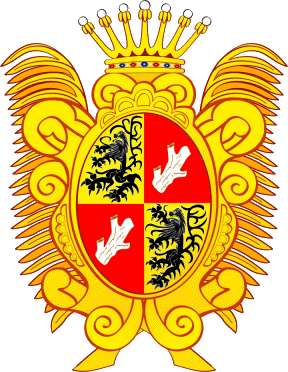For the above picture, Jochen Wilke used a
design consistent with the flamboyant baroque style typical of Leibniz's own times.
The seven-pearl coronet is a German baronial crown
(Leibniz became a baron in 1711).
Pending further investigations,
the tincture of the charge in the second and third quarters is assumed
to be Argent (it could turn out to be "Or" or "Proper").
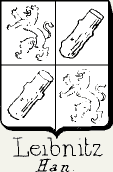
Wilke quotes a private communication from Prof. Dr. Herbert Breger (of the Leibniz-Archiv
in Hanover) indicating that the arms were originally granted to Paul von Leibniz, who was knighted
by the Emperor on August 3, 1600.
Paul von Leibniz was a nephew of the great-great-grandfather of Gottfried Wilhelm von Leibniz.
Paul died without heirs and his arms were eventually adopted by other family members,
including Gottfried Wilhelm and his half-brother
(according to the work of Totok & Haase:
Leibniz. Sein Leben, sein Wiken, seine Welt, Hanover 1966, pp. 8-9).
In a 2006-06-14 forum discussion,
Friedhard Pfeiffer quotes the following German blazon from
Die Wappen der deutschen freiherrlichen und adeligen Familien in genauer
vollständiger Beschreibung, mit geschichtlichen und urkundlichen Nachweisen by
Prof. Dr. Ernst Heinrich Kneschke (Leipzig 1855-1857)
itself listed in
Bibliographie zum deutschen Adel
1200-1999. It's not clear whether the parenthetical guess
about the tinctures is from Pfeiffer or appears in Kneschke's original text...
Geviert, 1 & 4 ein rechts gekehrter Löwe,
2 & 3 ein Schräglinks gelegter, oben und unten abgehauener,
an der rechten Seite zweimal, an der linken einmal geasteter Baumstamm
(Farben vielleicht: Gold-blau geviert, roter Löwe, silberner Baumstamm).
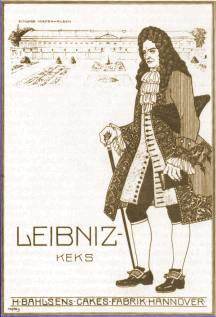
| |
Bahlsen advertisement for Leibniz-Keks
(c. 1900)
|
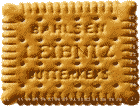
Leibniz-Keks
is a very popular brand of plain butter cookie. This German
Butterkeks is a carbon copy of the French
petit-beurre (invented by Lefèvre-Utile
in 1886) down to the pattern of its serrated edges (with 52 teeth).
Leibniz-Keks have been produced
by the Hanover-based Bahlsen food company since 1891 (the
Choco
Leibniz is another related cult cookie).
The name of the cookie is now so ingrained into German culture
that native German speakers
could only interpret the humorous term Keks-Wappen
(coined by Jochen Wilke) as denoting the arms of Leibniz.
Similarly, we're told that the
Leibniz Gymnasium
of Remscheid (Nordrhein-Westfalen) is
colloquially known as Keks-Penne.
Computer aficionados remember Leibniz for developing
binary numeration (1679) which
he published in 1701 to mark his election to the French
Académie des sciences.
This is the aspect Google focused on when they honored him with the following
doodle
on his 372-nd Birthday (2018-07-01).
The six bytes
on the scroll spell "Google" in ASCII.
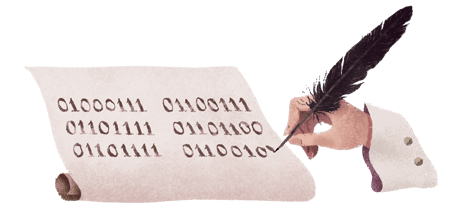
Rue
Leibniz (Paris XVIII)
|
Philosophy
|
Mathematics
|
Wikipedia

